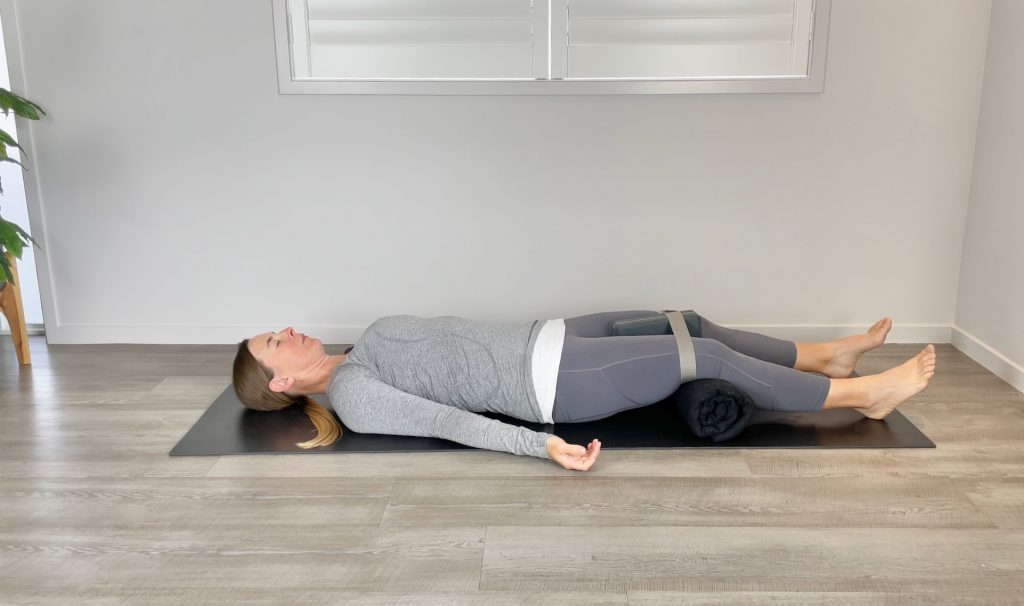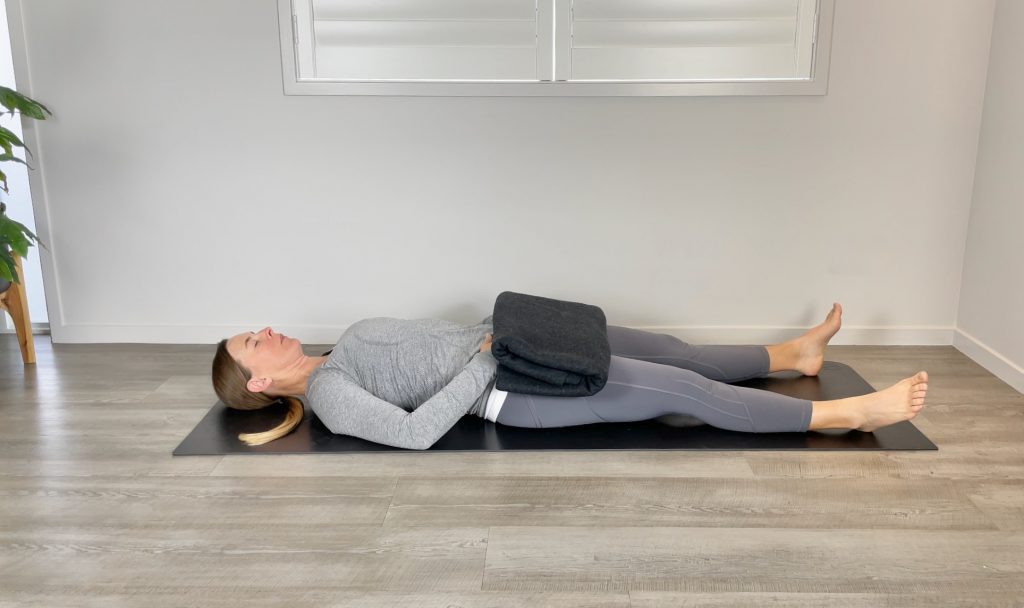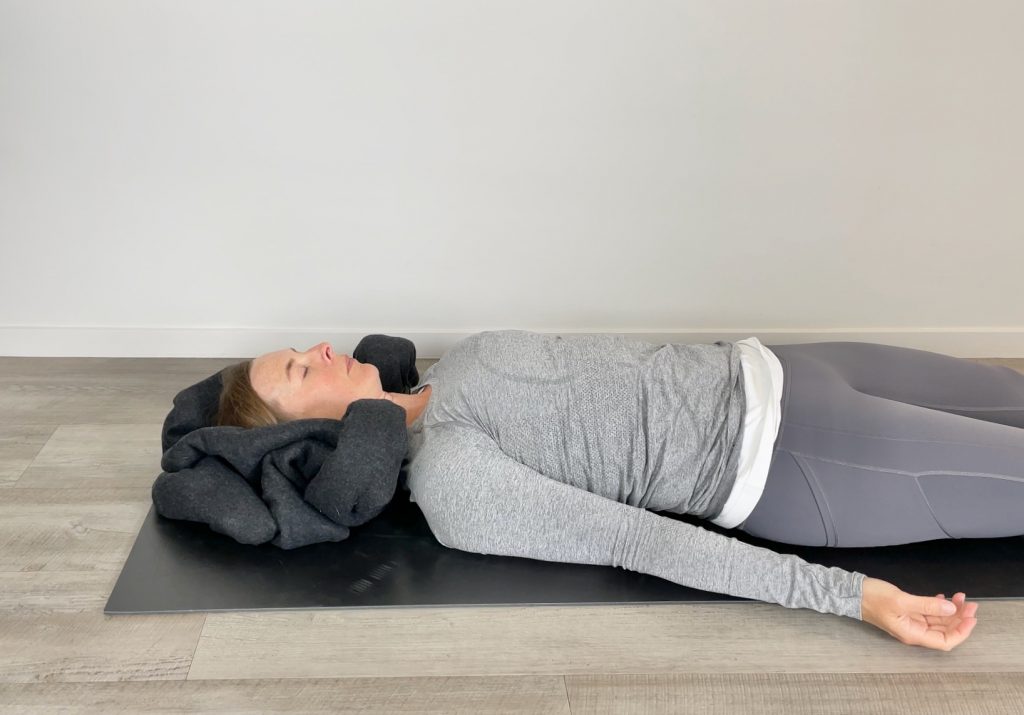5 Savasana Myths Busted
by Rachel Land | January 9, 2022 9:35 pm
Ah Savasana: a nourishing balm of stillness and quiet. Your absolute favorite pose; the highlight of every yoga class. Except … when it isn’t.
We’ve probably all seen people wearing “I’m only here for Savasana ” tank tops, and certainly some students settle straight into this traditional closing pose, immediately and effortlessly still. But what if Savasana isn’t the blissful release for us that it seems to be for others? What if physical or mental discomfort stops us from relaxing there the way other students seem to do?
Most teachers agree that Savasana is a key component of physical yoga practice. It’s where we finally set aside the need to control the position of our body or the pace of our breath, a chance down-regulate the nervous system from “doing ” to “being “. Translating to “corpse pose “, it signifies the end of our practice, and thereby an opportunity to rehearse the ultimate letting go of agenda and ambition.
But regardless of its power and importance, in some respects Savasana is just like other yoga poses in that we all respond to it differently. Some of us relish Goddess or Horse pose (Utkata Konasana) while others hate it. Some love their time in Child’s Pose (Balasana) while others count down the seconds there. We also look pretty different from each other in these poses, and others, but for some reason, we seem to approach Savasana with a “one size fits all ” philosophy. But maybe we don’t have to.
Here are five commonly held beliefs about Savasana that might be holding you back from actually benefitting from your time there.
1. It’s easy and enjoyable.
Savasana is intended to take us to a state that involves no physical or mental effort: awake and aware, in complete ease. Some of us, some times, slip straight into that state, but it’s unrealistic to expect it. Savasana is the practice of surrender, of deliberately doing nothing, and for most of us that is very unfamiliar. There’s a reason why it’s normally at the end of practice, in the hope that we will have done enough physical and mental activity to vent some tension. We are used to being busy; when we ask ourselves to lie still we might feel the need to fidget or scratch an itch, or find our thoughts racing.
When I find myself struggling to settle, I approach Savasana the same way I would formal meditation. If my mind is darting from place to place, I give it a simple task to focus on: I might count each breath from one to ten, then start again at one, or silently repeat a mantra like “Breathing in, Breathing out “. If there’s nervous energy in my body, I might channel that into a small movement, like touching the tip of one thumb to the tip of each finger on that hand in turn.
2. It must be symmetrical.
There are ideals around the alignment of pretty much every yoga pose, including Savasana; we lie supine, legs extended with feet rolling open to mat-width, arms wide from the torso with palms upturned, shoulder blades drawn down beneath the ribcage and chin slightly tucked. After all the movements and shapes we’ve created in practice, the idea is that we integrate in symmetry, in a supine version of the standard anatomical position.
But even the anatomical position is a model, rather than reality. We aren’t symmetrical to begin with (having only one heart, stomach and liver, for example) and through our lives we develop around asymmetric movement and postural habits: one hand usually more dextrous, one arm stronger for lifting and holding, one leg more stable for standing, and so on.
Add on day-to-day niggles like waking up with a stiff neck, or sustaining an injury, and you can imagine multiple scenarios where symmetry is unlikely to be comfortable. And if we are to truly relax in Savasana, surely it’s more important that we are comfortable than that we are symmetrical. Perhaps that means leaning your head to one side, one arm drifting wider from your torso, or one arm rotated in so that your hand rests on your abdomen. Perhaps one part of your body feels the need for a little extra support, leading to the next myth.
3. No props are required.
Many of us use a strap to bridge the gap between our hands and feet in the seated hamstring stretch Paschimottanasana, or place a block under our bottom hand to help lift our torso away from the floor in Triangle (Trikonasana) or Extended Side Angle (Utthita Parsvakonasana) poses. Given that the aim of Savasana is to allow us to be comfortable enough to let go of tension, why wouldn’t we consider using props in Savasana too?
Not all of us lie comfortably flat on our backs. Perhaps tension in our hip flexors from work or sport habits tips our pelvis forward, pulling our low back into a deeper than normal curve that becomes uncomfortable after a time; something as simple as propping the backs of our thighs on a bolster or rolled blanket counters that pattern. Or maybe when our head is on the floor our chin juts toward the ceiling, creating compression in the back of the neck; supporting the back of the head on a folded blanket could change that.
Beyond that, the same way that some people are soothed in bed by weighted blankets, some of us find it easier to become still when props hold us that way. Try one of these options, or explore your own:
- Restless legs? Try wedging a yoga block or folded blanket between your knees and holding it firmly in place with a looped strap around your thighs just above the knees.

- Ground your hips by draping a heavy folded blanket over your lower belly and pelvis. You can also use this set-up to soothe cold or fidgety hands: leave your upper arms resting heavy on the floor, bend your elbows and tuck your hands under the folded blanket, palms on your frontal hip points.

- Create a supportive cocoon to encourage deep relaxation in the muscles of your head and neck. Place a folded blanket under the back of your head. Roll the end closest to you shoulders to snugly fill the space between the back of your neck and the floor, then tuck the remaining blanket closely around the sides and top of your head to create a soft, warm nest.

4. You must be supine.
While lying on our backs seems to result in the fastest heart rate recovery after exercise, some of us, on some days, simply aren’t comfortable enough to relax in that position no mater what props we use. We shouldn’t be surprised: when it comes to lying comfortably for a period of time – as we do in bed to sleep – research suggests that fewer than 40% of people choose to lie on their back.
There are plenty of alternative positions to try, like bending your knees, planting your feet mat-width apart and allowing your knees to lean toward each other. You could lift your feet entirely and support your calves on a bolster set on top of two blocks. If it’s difficult to breathe deeply lying flat, try propping a bolster on two different-height blocks to create a comfortable incline, like a lounge chair, to lean your spine onto. Or side-lying with a bolster between your bent knees and your head cushioned on a folded blanket. You could even try lying prone, elbows bent out wide and head resting on stacked hands.
5. Eyes must be closed.
Eye activity and mental activity are linked. When our eyes move around, we feed visual information to the brain that needs to be processed; closing the eyes reduces the stimulus coming in and can allow mental activity to slow. Sometimes, though, closing our eyes has the opposite effect. Without the tether of visual focus on the here and now, our thoughts might roam back into the past or project forward into the future. At times of stress or anxiety, that potential could lead to the exact opposite of the relaxation intended by Savasana.
At times when closing your eyes sends you into an unhelpful internal thought loop, try resting your gaze soft and still in one place, letting your top eyelids drift part-way down to relax the muscles around your eyes. You could even position yourself so that there is a pleasant shape, color or pattern to rest your attention on.
Savasana is a potent pose, an important capstone to physical yoga practice, but our experience of it is as varied as we are. Instead of letting imagined rules rob us of its benefits, let’s give ourselves permission to be truly comfortable in Savasana, no matter what outward shape that entails.
Source URL: https://yogadigest.com/5-savasana-myths-busted/